View in other NatureServe Network Field Guides
NatureServe
Montana
Utah
Wyoming
Idaho
Wisconsin
British Columbia
South Carolina
Yukon
California
New York
Pearl Crescent - Phyciodes tharos
General Description
[From Ferris and Brown 1981; Scott 1986; Opler and Wright 1999; Greenberg 2001] Forewing 1.5-2.0 cm. Variable, usually with orange antennae clubs. Uppersurface with thick black borders but middle more broadly orange, males with postmedian and submarginal orange areas broken by fine black marks, forewing median band usually not much paler than postmedian band, hindwing of males and females similar; undersurface of hindwing with crescent surrounded by brownish patch.
Phenology
Several flights in the south and east; late April to October in Virginia, May to September in New York and Colorado plains; two flights in Saskatchewan, late May to August (Scott 1986). April and May to September and October (Glassberg 2001).
Diagnostic Characteristics
Probably best told by a combination of orange antennae clubs, uppersurface with thick black borders but middle more broadly orange, the forewing median band usually not much paler than postmedian band, hindwing of males and females similar; undersurface of hindwing with crescent surrounded by brownish patch. Similar to P. cocyta, with which it may be be easily confused.
Species Range
Montana Range
Range Descriptions
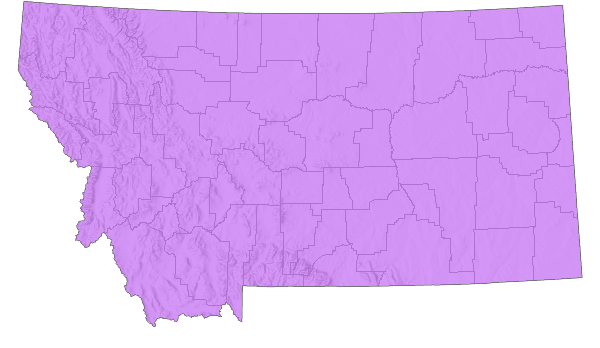
 Native
Native
Range Comments
Extreme southern Canada from southeastern Alberta east to southern Ontario, south through eastern 2/3 of US east of continental divide, southwest to northern Baja and southern Mexico; isolated populations in eastern Utah and western Colorado (Scott 1986; Opler and Wright 1999; Glassberg 2001); to 2926 m elevation in Colorado (Brown 1957; Scott and Scott 1978). In Montana, reported from most counties in the eastern 2/3 of the state, and at least Flathead County west of the continental divide (Kohler 1980; Stanfrod and Opler 1993). Common to abundant (Glassberg 2001).
Observations in Montana Natural Heritage Program Database
Number of Observations: 10
(Click on the following maps and charts to see full sized version)
Map Help and Descriptions
Relative Density
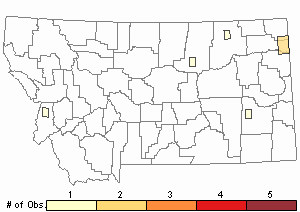
Recency
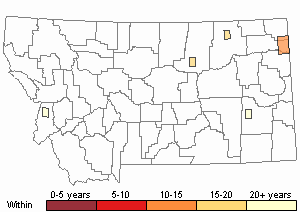
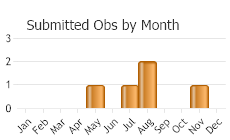
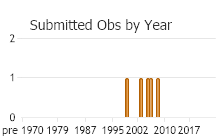
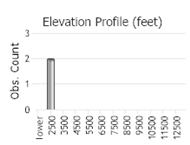 (Observations spanning multiple months or years are excluded from time charts)
(Observations spanning multiple months or years are excluded from time charts)
Migration
Non-migratory.
Habitat
Prairies, intermittent streamcourses, riparian canyons, wooded marshes, open weedy fields, vacant lots, pastures, roadsides (Ferris and Brown 1981; Scott 1986; Opler and Wright 1999; Glassberg 2001). In Glacier National Park, Montana reported in montane xeric and mesic meadows (Debinski 1993).
Food Habits
Larval food plants include several species of Symphyotrichum, captive larvae also feed on Erigeron (Scott 1986, 1992, 2006). Adults feed on flower nectar (including Asclepias, Astragalus, Bidens, Cirsium, Cornus, Echinacea, Euphorbia, Fragaria, Gaillardia, Helenium, Helianthus, Heracleum, Heterotheca, Lithospermum, Machaeranthera, Medicago, Nepeta, Phlox, Prunus, Pycanthemum, Ranunculus, Rudbeckia, Senecio, Solidago, Symphyotrichum, Taraxacum, Trifolium, Valeriana, Verbena, Viola) and mud (Scott 1986, 2014; Tooker et al. 2002).
Reproductive Characteristics
Females lay eggs laid in clusters (20-300 eggs per cluster) on undersides of host plant leaves, up to 700 eggs total per female. Larvae gregarious, build no nest, overwinter (hibernate) as L3 instar (Scott 1986, 1992, 2006). Males patrol throughout the day near host plants, mostly in valley bottoms, wet meadows, streamsides, in search of females (Scott 1975b, 1986).
Stewardship Responsibility
References
- Literature Cited AboveLegend:
 View Online Publication
View Online Publication Brown, F.M. 1957. Colorado Butterflies. Proceedings; Numbers Three through Seven. Denver Museum of Natural History, Denver, Co.
Brown, F.M. 1957. Colorado Butterflies. Proceedings; Numbers Three through Seven. Denver Museum of Natural History, Denver, Co. Debinski, D. 1993. Butterflies of Glacier National Park, Montana. Occasional Papers of the Museum of Natural History, the University of Kansas, Lawrence, Kansas. No. 159: 1-13.
Debinski, D. 1993. Butterflies of Glacier National Park, Montana. Occasional Papers of the Museum of Natural History, the University of Kansas, Lawrence, Kansas. No. 159: 1-13. Ferris, C.D. and F.M. Brown (eds). 1981. Butterflies of the Rocky Mountains. Univ. of Oklahoma Press. Norman. 442 pp.
Ferris, C.D. and F.M. Brown (eds). 1981. Butterflies of the Rocky Mountains. Univ. of Oklahoma Press. Norman. 442 pp. Glassberg, J. 2001. Butterflies through Binoculars: A Field Guide to the Butterflies of Western North America. Oxford University Press.
Glassberg, J. 2001. Butterflies through Binoculars: A Field Guide to the Butterflies of Western North America. Oxford University Press. Opler, P.A. and A.B. Wright. 1999. A field guide to western butterflies. Second edition. Peterson Field Guides. Houghton Mifflin Company, Boston, Massachusetts. 540 pp.
Opler, P.A. and A.B. Wright. 1999. A field guide to western butterflies. Second edition. Peterson Field Guides. Houghton Mifflin Company, Boston, Massachusetts. 540 pp. Scott, J.A. 1975b. Mate-locating behavior of western North American butterflies. Journal of Research on the Lepidoptera 14:1-40.
Scott, J.A. 1975b. Mate-locating behavior of western North American butterflies. Journal of Research on the Lepidoptera 14:1-40. Scott, J.A. 1986. The butterflies of North America: a natural history and field guide. Stanford University Press, Stanford, California.
Scott, J.A. 1986. The butterflies of North America: a natural history and field guide. Stanford University Press, Stanford, California. Scott, J.A. 1992. Hostplant records for butterflies and skippers (mostly from Colorado) 1959-1992, with new life histories and notes on oviposition, immatures, and ecology. Papilio new series #6. 185 p.
Scott, J.A. 1992. Hostplant records for butterflies and skippers (mostly from Colorado) 1959-1992, with new life histories and notes on oviposition, immatures, and ecology. Papilio new series #6. 185 p. Scott, J.A. 2006. Butterfly hostplant records, 1992-2005, with a treatise on the evolution of Erynnis, and a note on new terminology for mate-locating behavior. Papilio new series #14. 74 p.
Scott, J.A. 2006. Butterfly hostplant records, 1992-2005, with a treatise on the evolution of Erynnis, and a note on new terminology for mate-locating behavior. Papilio new series #14. 74 p. Scott, J.A. 2014. Lepidoptera of North America 13. Flower visitation by Colorado butterflies (40,615 records) with a review of the literature on pollination of Colorado plants and butterfly attraction (Lepidoptera: Hersperioidea and Papilionoidea). Contributions of the C.P. Gillette Museum of Arthopod Diversity. Fort Collins, CO: Colorado State University. 190 p.
Scott, J.A. 2014. Lepidoptera of North America 13. Flower visitation by Colorado butterflies (40,615 records) with a review of the literature on pollination of Colorado plants and butterfly attraction (Lepidoptera: Hersperioidea and Papilionoidea). Contributions of the C.P. Gillette Museum of Arthopod Diversity. Fort Collins, CO: Colorado State University. 190 p. Scott, J.A. and G.R. Scott. 1978. Ecology and distribution of the butterflies of southern central Colorado. Journal of Research on the Lepidoptera 17(2): 73-128.
Scott, J.A. and G.R. Scott. 1978. Ecology and distribution of the butterflies of southern central Colorado. Journal of Research on the Lepidoptera 17(2): 73-128. Stanford, R.E. and P.A. Opler. 1993. Atlas of western USA butterflies: including adjacent parts of Canada and Mexico. Unpubl. Report. Denver and Fort Collins, Colorado 275 pp.
Stanford, R.E. and P.A. Opler. 1993. Atlas of western USA butterflies: including adjacent parts of Canada and Mexico. Unpubl. Report. Denver and Fort Collins, Colorado 275 pp. Tooker, J.F., P.F. Reagel, and L.M. Hanks. 2002. Nectar sources of day-flying lepidoptera of central Illinois. Annals of the Entomological Society of America 95(1): 84-96.
Tooker, J.F., P.F. Reagel, and L.M. Hanks. 2002. Nectar sources of day-flying lepidoptera of central Illinois. Annals of the Entomological Society of America 95(1): 84-96.
- Additional ReferencesLegend:
 View Online Publication
View Online Publication
Do you know of a citation we're missing? Allen, T.J., J.P. Brock, and J. Glassberg. 2005. Caterpillars in the field and garden: a field guide to the butterfly caterpillars of North America. Oxford University Press.
Allen, T.J., J.P. Brock, and J. Glassberg. 2005. Caterpillars in the field and garden: a field guide to the butterfly caterpillars of North America. Oxford University Press. Brock, J.P. and K. Kaufman. 2003. Kaufman Field Guide to Butterflies of North America. Houghton Mifflin Company, New York, NY 284 pp.
Brock, J.P. and K. Kaufman. 2003. Kaufman Field Guide to Butterflies of North America. Houghton Mifflin Company, New York, NY 284 pp. Caruthers, J.C., and D. Debinski. 2006. Montane meadow butterfly species distributions in the Greater Yellowstone Ecosystem. University of Wyoming National Park Service Research Center Annual Report, 2006. Vol. 30, Art. 14. 85-96.
Caruthers, J.C., and D. Debinski. 2006. Montane meadow butterfly species distributions in the Greater Yellowstone Ecosystem. University of Wyoming National Park Service Research Center Annual Report, 2006. Vol. 30, Art. 14. 85-96. Forister, M.L., C.A. Halsch, C.C. Nice, J.A. Fordyce, T.E. Dilts, J.C. Oliver, K.L. Prudic, A.M. Shapiro, J.K. Wilson, J. Glassberg. 2021. Fewer butterflies seen by community scientists across the warming and drying landscapes of the American West. Science 371:1042-1045.
Forister, M.L., C.A. Halsch, C.C. Nice, J.A. Fordyce, T.E. Dilts, J.C. Oliver, K.L. Prudic, A.M. Shapiro, J.K. Wilson, J. Glassberg. 2021. Fewer butterflies seen by community scientists across the warming and drying landscapes of the American West. Science 371:1042-1045. Forister, M.L., E.M. Grames, C.A. Halsch, K.J. Burls, C.F. Carroll, K.L. Bell, J.P. Jahner, et al. 2023. Assessing risk for butterflies in the context of climate change, demographic uncertainty, and heterogeneous data sources. Ecological Monographs 93(3):e1584. https://doi.org/10.1002/ecm.1584
Forister, M.L., E.M. Grames, C.A. Halsch, K.J. Burls, C.F. Carroll, K.L. Bell, J.P. Jahner, et al. 2023. Assessing risk for butterflies in the context of climate change, demographic uncertainty, and heterogeneous data sources. Ecological Monographs 93(3):e1584. https://doi.org/10.1002/ecm.1584 Kohler, S. 1980. Checklist of Montana Butterflies (Rhopalocera). Journal of the Lepidopterists' Society 34(1): 1-19.
Kohler, S. 1980. Checklist of Montana Butterflies (Rhopalocera). Journal of the Lepidopterists' Society 34(1): 1-19. Layberry, R.A., P.W. Hall, and J.D. LaFontaine. 1998. The Butterflies of Canada. University of Toronto Press. 280 pp. + color plates.
Layberry, R.A., P.W. Hall, and J.D. LaFontaine. 1998. The Butterflies of Canada. University of Toronto Press. 280 pp. + color plates.
- Web Search Engines for Articles on "Pearl Crescent"
- Additional Sources of Information Related to "Insects"





